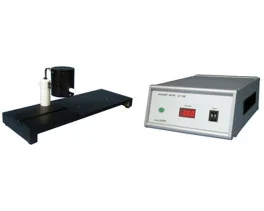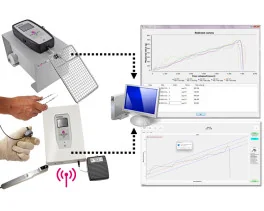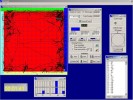Authors
S Bergeron, Y Chen, F Auger, J Deguil, n Durieux, E Skrobala, R Barus, C Potey, C Cordonnier, F Pasquier, L Ravasi, R Bordet, S Gautier
Lab
Univ. Lille, Inserm, CHU Lille, Degenerative and Vascular Cognitive Disorders, Lille, France
Journal
Journal of Cerebral Blood Flow & Metabolism
Abstract
Cerebral microbleeds (CMBs) could contribute to cognitive impairment in the general population and in patients with dementia. We designed a study to (i) develop a murine model of CMBs, (ii) assess whether CMBs affect cognition in this model and (iii) assess whether this model is sensitive to pharmacological modulation. Male C57Bl6/J mice were stereotactically administered collagenase to induce cortical lesion analysed by MRI at 24_h. CMB-mice were assessed at six weeks post-lesion for cognitive performances (Barnes maze and Touchscreen automated paired-associated learning (PAL) task) and for cerebral metabolism (inÊvivo PET/CT with fluorodeoxyglucose (FDG)). CMB-model sensitivity to pharmacological modulation was assessed by administering atorvastatin (5_mg/kg/day) over the follow-up period. CMB mice were compared to na•ve littermates. Collagenase at 0.8_µU/µl appeared suitable to induce reproducible and reliable CMBs. At six weeks, a decline in learning, spatial and visuospatial memory was significantly observed in CMB-mice. Brain metabolism was impaired in all cortex, striatum and the ipsilateral dentate gyrus. A significant improvement in cognition performances was depicted under atorvastatin. In this novel murine model of CMBs, we validated that CMBs lowered cognitive performances and affected regional metabolism. We also proved that this CMB-model is sensitive to pharmacological modulation.
BIOSEB Instruments Used:
Acquisition software: ACTITRACK (ACTITRACK)

 Pain - Thermal Allodynia / Hyperalgesia
Pain - Thermal Allodynia / Hyperalgesia Pain - Spontaneous Pain - Postural Deficit
Pain - Spontaneous Pain - Postural Deficit Pain - Mechanical Allodynia / Hyperalgesia
Pain - Mechanical Allodynia / Hyperalgesia Learning/Memory - Attention - Addiction
Learning/Memory - Attention - Addiction Physiology & Respiratory Research
Physiology & Respiratory Research




































 Pain
Pain Central Nervous System (CNS)
Central Nervous System (CNS) Neurodegeneration
Neurodegeneration Sensory system
Sensory system Motor control
Motor control Mood Disorders
Mood Disorders Other disorders
Other disorders Muscular system
Muscular system Joints
Joints Metabolism
Metabolism Cross-disciplinary subjects
Cross-disciplinary subjects CONFERENCES & MEETINGS
CONFERENCES & MEETINGS 